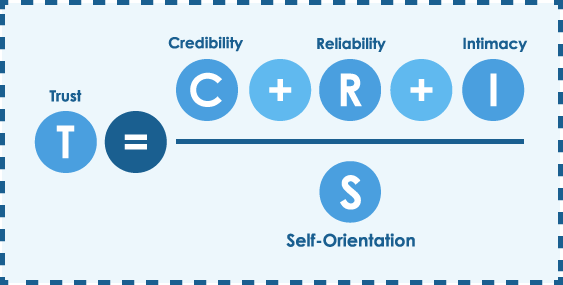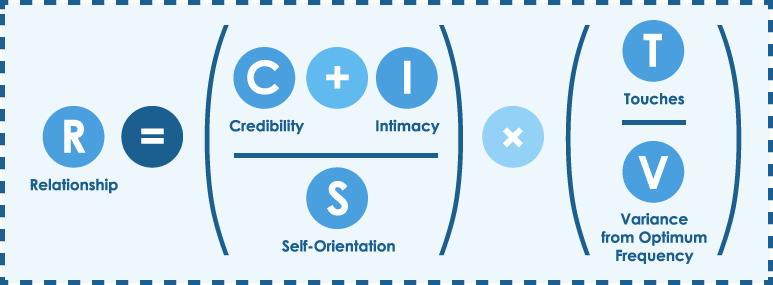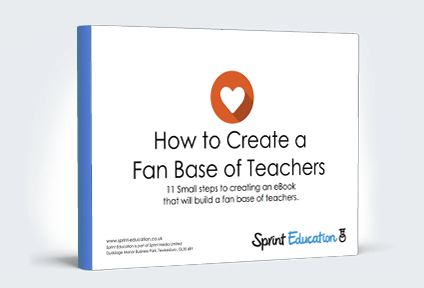Is R=[(C+I)÷S]x(T÷V) the Formula for Selling to Schools Success?
Is R=[(C+I)÷S]x(T÷V) the Formula for Selling to Schools Success?
Selling to schools isn't about marketing, it's about building relationships and showing teachers you can help them overcome their obstacles.
Selling to schools isn't about marketing, it's about building relationships and showing teachers you can help them overcome their obstacles.
“Teachers don’t need marketing; they need relationships with people that can help them overcome their daily obstacles.”
This quote from our Campus video perfectly sums up the ethos behind our new marketing & sales software, and also encapsulates the approach that we’re always encouraging our clients to take when selling to schools.
But what exactly do we mean when we say that relationships are the key? How do we go about nurturing these relationships and is there a formula that will guarantee success when selling to schools?
That’s the thought that struck me while driving home from the office last Friday evening (and the thought that kept going round and round in my head for the next 4 hours until I finally gave in, booted up the laptop, and started writing this blog).
I thought if I could find the formula for a successful relationship then perhaps (with a little jiggery-pokery) this could be applied to our clients’ education marketing. Therefore, the first thing I did was type ‘secrets of a successful relationship’ into Google. Oh dear. Not only did some of the results make me blush, they were also impossible (or at best highly inadvisable) to apply to selling to schools.
So then I started thinking of another word I could search for instead of ‘relationship’. ‘Trust’ seemed to sum up the kind of relationship I was interested in (after all, trust is absolutely integral to any kind of relationship) and it was then that I stumbled across The Trust Equation…
This immediately struck a chord with me and I could see straight away that most of it could be very neatly applied to our clients’ selling to schools.
So, armed with everything I’ve learned about emailing teachers from the 1,000+ campaigns that I’ve worked on, I set about tweaking this formula so it incorporated all the factors that I think are crucial in nurturing relationships with teachers.
This is what I came up with…
Let’s look at the first part of the equation…
Credibility {C}:
Credibility is something that is obviously incredibly important when building a relationship with a teacher. However, I think many education businesses get the wrong idea about what being credible actually means in terms of their selling to schools.
Let me be clear; I’m not talking about how all your staff are CRB checked, or about how you’re the market leader in your sector, or even that you’ve been doing what you do for 20 years. That’s all just noise and says nothing about you as a person.
A relationship is formed between people, not businesses, so it’s your personal credibility that I’m talking about here. Teachers want relationships with people that are honest and who have their best interests at heart, so show them that you’re not afraid to tell the truth (even if it makes you look bad).
I wrote a blog a while ago about how being brutally honest with your marketing actually helps you to stand out from the crowd. So, if you’re a small family-run business you should be shouting about it from the rooftops (instead of worrying that it undermines you). Likewise, if you’ve ever made a mistake then tell teachers how you learned from this and how you put it right.
These are the kinds of things that make you credible, not how many clients you have or how many years you’ve been in business.
Intimacy {I}:
If you think about your most valued relationships, I’d wager that the level of intimacy is high on the list of qualities that spring to mind. For example, do you feel safe and comfortable talking to that person about any issue?
It’s no different in our business relationships; we want to know that the person we’re dealing with will listen to us and show empathy when we have a concern. It’s tricky to achieve a level of intimacy in your marketing, and it’s not something that everyone feels happy to do, but the potential benefits are huge.
Ensuring your content is written in a personable way, including a photo in your email signature, sharing something personal about yourself, and being able to refer to past conversations or interactions, are all powerful ways to create a feeling of intimacy.
Kelly, our Queen of Customer Happiness, wrote a great blog recently about how thrusting your team's personalities into the spotlight can really help you to create a feeling of intimacy with your marketing (see Kelly's Top Trump card below).
But you can go much deeper than this. If you’re using Lead Generation Forms in order to capture some buyer persona data about teachers, then you can use this information to ensure your marketing really hones in on the specific challenges that each teacher is facing in their school.
Self-Orientation {S}:
If somebody is always talking about themselves does this have a positive or negative effect on your relationship with them? That’s a rhetorical question by the way, as we all know the answer.
Is the content of your marketing to schools focussed on you or the teacher that receives it? The more you choose to focus on yourself, the less successful you’ll be in developing your relationship.
Make sure you’re regularly sending out free resources (eBooks, whitepapers, lesson plans) that provide teachers with some free value and show them that your main concern is helping them to achieve better outcomes at their school. And make sure you’re not using these free resources to harp on about how your products and services will solve their challenges – give them the tools to solve the problems themselves and you’ll take your relationship to another level.
If you've never written a whitepaper before, have a read of this cracking free report which outlines the 11 simple steps to creating a fan base of teachers with your marketing...
And when it comes to actually selling to schools, realise that the best way to make more sales is to stop trying to make more sales and instead focus on being relentless in helping teachers to make the best decision for them right now.
So there we are; that’s the first part of our equation sorted. But there’s another crucial factor in any relationship that needs to be factored in: time. When we think about time in terms of email marketing it seems to me there are two key elements…
Touches {T}:
Relationships are not formed overnight. It’s impossible to have trust in your relationship from the get-go; it needs to be carefully nurtured and developed over a period of time. Anyone expecting to make a glut of sales on the back of one email campaign is living in cloud cuckoo land!
At Sprint we’ve done some research into how many touches (emails, calls, meetings etc.) it takes to convert a follower into a paying customer when selling to schools. These results show that the vast majority of sales (a whopping 85%) are made between the 5th and 12th contact you have with a teacher.
So, the key thing to take away here is that you need to take time to let relationships develop before you try and sell something to a teacher that has expressed an interest in what you offer. By rushing your relationship you’ll only end up undoing some of the hard work you’ve already done.
And don’t give up. Just because a teacher seemed really interested and then has gone quiet, this doesn’t mean they’re no longer interested; it just means that they don’t feel comfortable enough to take that next step just yet. Show empathy by understanding that this is a big decision for them and continue to send them helpful marketing (case studies, whitepapers etc) until they truly trust you.
Variance from Optimum Frequency {V}:
The last element in our formula is a little caveat to the point above really. Yes, the number of touches is extremely important in your marketing, but it’s not simply a question of quantity.
Finding the optimum frequency for your marketing is essential (this might vary depending upon the type of content you’re sending and the position of the teacher in your sales funnel). Too many emails in quick succession and you’ll compromise on lovability, while leaving huge gaps between emails will allow your relationship to lose momentum.
Any significant variance from the optimum frequency will reduce the success derived from the number of touches.
And that’s it; my formula for success when selling to schools! I hope you find it useful and you’ll be willing to overlook any errors in the way that I’ve expressed my formula (maths was never my strongest suit).
If you’ve found yourself nodding your head while reading this blog then I really hope you’ll check out Campus. It’s been developed to help you build relationships with teachers through your email marketing and it will really help you in selling to schools by putting this formula into practice.
Tags
Marketing to Schools
Selling to Schools
Emailing Teachers
Selling to Teachers
How to Sell to Schools
Similar Articles


Marketing EdTech and Software to Schools and Teachers
Learn 10 game-changing insights especially for edtech and software businesses to enhance your education marketing campaigns when emailing schools.


VIDEO: Selling to Schools Insights - Chapter 2 - Communicating with Schools
We analyse chapter 2 of The State of Selling to Schools 2023, discover how emails compare to social media and postal marketing, how often each is viewed and what leads to the most positive teacher responses.


Expert marketing to schools support and solutions
Expert marketing to schools solutions
Email Head Teachers, Teachers, and Staff Inboxes
Email teachers and staff inboxes
Sell More to UK and Global Schools and Colleges
Sell more to schools and colleges




























